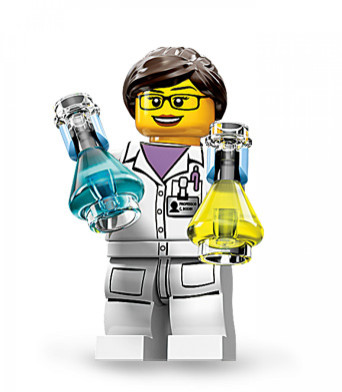LEGO Unveils First Female Scientist Minifigure In Series 11 [PHOTO]

For the first time ever, LEGO released its female scientist minifigure.
The pocket-sized figurine called “Scientist” holds two flasks, wears a white lab coat, glasses and costs $2.99.
“The brilliant Scientist’s specialty is finding new and interesting ways to combine things together. She’ll spend all night in her lab analyzing how to connect bricks of different sizes and shapes,” according to the product’s description.
The “minifig” whose ID tag reads "Professor C. Bodin" has led an accomplished fictional career, winning the Nobrick Prize for her discovery of the theoretical System/Duplo Interface.
The Scientist also pushed for technological advances, too. “Thanks to the Scientist’s tireless research, Minifigures that have misplaced their legs can now attach new pieces to let them swim like fish, slither like snakes, and stomp around like robots,” according to the product’s description.
While a female zookeeper, a female astronaut, and doctor exist – this is the first female scientist. “Scientist” is one of 16 models in the new Minifigure Series 11 on Sept. 1. The figures are sold in the same packaging.
“Finding her will take a bit of doing, but I’ve done my homework,” Scientific American’s Maia Weinstock said at the release. “Thanks to advanced scouting from fellow adult fans of LEGO, however, I know precisely what to feel for -- two tiny Erlenmeyer flasks -- as well as what hidden code to look for on the backs of the packages.”
Weinstock adds that the gender gap in the male-dominated LEGO toys extends beyond the “minifigs.”
“During my investigation, I found that the ratio of all-time minifigure models is roughly 4:1 in favor of males,” Weinstock said. “And the female characters LEGO has produced are often laden with stereotypes. A quick glance at some typical female minifig torsos suggests that girls/women are predominantly into pink, hearts, and excess skin.”
Weinstock says the gender stereotypes boil down to better sales. “Some, including LEGO, have claimed that they only follow such practices because this is what their customers will buy,” she said. “But what do excessive stereotypes teach our children about future expectations for themselves and for their interactions with others?”
© Copyright IBTimes 2025. All rights reserved.




















